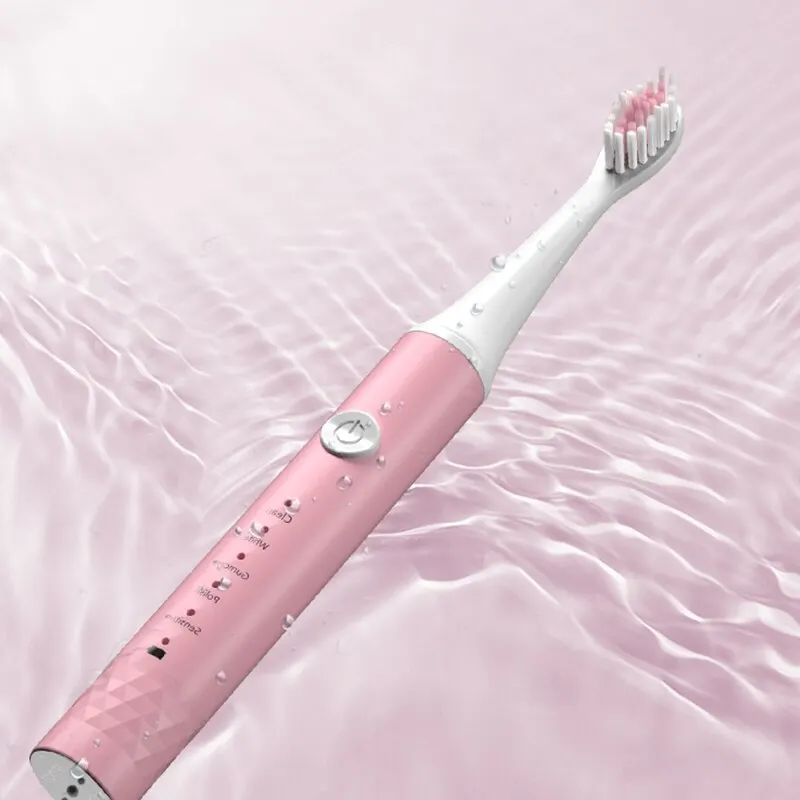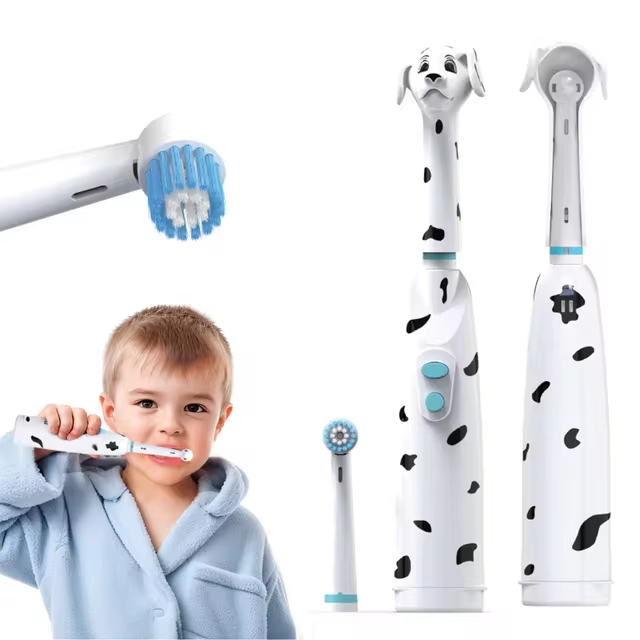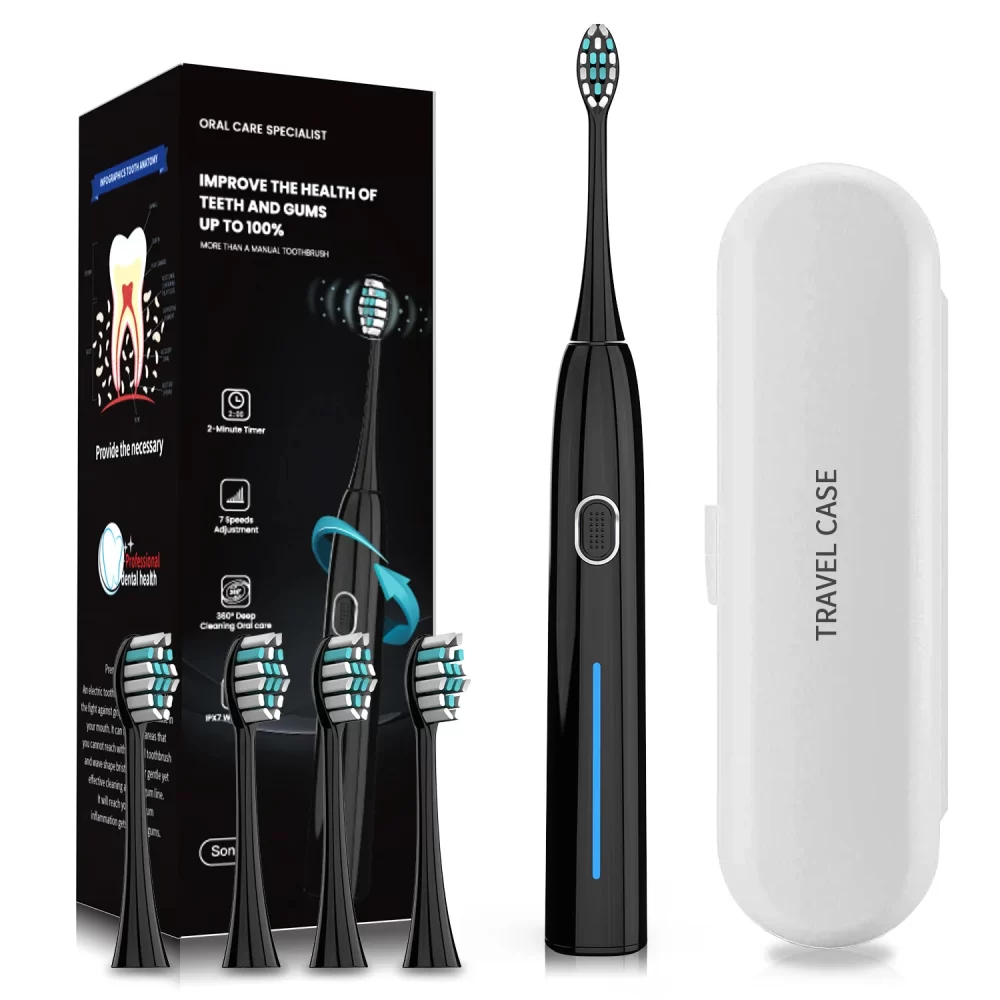Electric toothbrushes have revolutionized oral hygiene, providing a thorough and effective way to maintain dental health. However, one of the frequent questions that arise among users is: “How often should you change your electric toothbrush?” This article explores the factors that influence how often you should replace your toothbrush, the importance of doing so, tips for maintaining oral hygiene, and more.
Key Benefits of Using an Electric Toothbrush
Enhanced Cleaning Efficiency
An electric toothbrush delivers superior cleaning. Its fast-moving bristles reach tight spaces easily. This cleaning action is more efficient than manual brushing. As a result, it reduces plaque buildup and lowers the risk of gum disease.

Ease of Use with Built-in Features
Electric toothbrushes make brushing simple. They come with features like timers and pressure sensors. These ensure you brush the right amount of time without too much force. This is helpful for people who have hand mobility issues or want to avoid damaging their gums.
Time Efficiency in Daily Oral Care
Using an electric toothbrush saves time. Its advanced technology cleans quickly and effectively. This ensures your oral care routine is both thorough and time-efficient. You’ll spend less time brushing yet still achieve a deep clean for your teeth.
Choosing the Right Electric Toothbrush
Selecting the ideal electric toothbrush involves multiple factors that cater to personal dental needs and preferences. Understanding these can greatly enhance your oral healthcare routine.
Considerations: Brush Heads and Brushing Modes
When picking an electric toothbrush, the type of brush head and the available brushing modes are crucial. Brush heads come in various forms like soft, medium, and hard. These cater to different sensitivities and cleaning needs. For instance, softer bristles are better for sensitive gums and teeth, while stiffer ones might be more effective for removing plaque.
The brushing modes such as standard, gum care, and whitening cater to specific oral health needs. Some electric toothbrushes offer modes for sensitive teeth or even massage settings to stimulate gum health. Choosing a toothbrush with multiple modes can provide a more customized brushing experience that targets your specific dental concerns.
Importance of Battery Life and Travel Convenience
Battery life is a significant factor, especially for those who travel often. You would want a toothbrush that holds a charge long enough for your trip, with some high-quality models lasting several weeks on a single charge. Additionally, for travel, consider a toothbrush with a secure travel case and one that can accommodate various voltages for worldwide use.
Understanding Different Brands and Quality
Different brands offer various features and quality levels in their electric toothbrush models. Reputable brands usually guarantee durability and effective cleaning. Although higher-priced models often provide advanced features and greater reliability, there are also budget-friendly options that do not compromise much on quality and performance.
Considering these aspects will help you choose an electric toothbrush that best suits your lifestyle and meets your oral health needs. This is vital, as a good electric toothbrush can significantly improve your daily dental care routine.
 Lifespan of an Electric Toothbrush
Lifespan of an Electric Toothbrush
Knowing the lifespan of an electric toothbrush is vital for effective oral hygiene. How long your toothbrush lasts can affect its performance and your oral health.
Factors Influencing Toothbrush Longevity
Several factors determine how long your electric toothbrush can serve you effectively. Here are critical factors to consider:
- Usage Frequency: The more often you use your toothbrush, the faster it may wear out. Typical lifespan with twice daily usage is three to five years.
- Battery Quality: Toothbrushes with higher quality batteries tend to last longer between charges and have a more extended overall lifespan.
- Care and Maintenance: Regular cleaning and proper storage of the toothbrush can significantly extend its life.
- Quality of the Brush Itself: Brands differ in the quality of their electric toothbrushes. Generally, higher-priced models offer better durability and functionality.
Signs You Need a New Electric Toothbrush
It’s important to know when to replace your electric toothbrush for optimal dental health. Look out for these signs:
- Worn-out Bristles: If the bristles are frayed or flattened, they won’t clean teeth effectively.
- Reduced Battery Efficiency: If the toothbrush doesn’t hold a charge as it used to, it might be time for a new one.
- Decreased Performance: If your toothbrush seems less powerful or skips vibrations, consider replacing it.
- Damage to the Toothbrush: Any visible cracks or damage to the handle or head can affect performance and hygiene.
Monitoring these aspects will help ensure your electric toothbrush is always in top condition, contributing to better oral health.
Maintenance Tips for Electric Toothbrushes
Maintaining your electric toothbrush is crucial for its longevity and effectiveness. Below are essential tips to keep your toothbrush in top condition.
Proper Cleaning and Sanitization
To prevent bacteria build-up, clean your toothbrush regularly. After each use, rinse the brush head under tap water, ensuring all toothpaste and debris are gone. For deep cleaning, soak the brush head in antibacterial mouthwash for a few minutes weekly. Always allow the toothbrush to air-dry after sanitization; this helps to curtail bacteria growth.
Storing Your Electric Toothbrush Correctly
Store your toothbrush upright and away from humid areas like showers. It’s best to keep it in a dry place with good air circulation. If your toothbrush comes with a protective cap, use it to guard against dust. Remember to change the brush head every 3 to 6 months for consistent cleaning performance. By doing so, you ensure your electric toothbrush serves you well for its intended lifespan, which can be between three to five years with proper care.
Common Questions About Electric Toothbrush Use
When investing in an electric toothbrush, you might have a few common questions regarding its use. Let’s delve into some of these concerns.
Power Loss Over Time
Do electric toothbrushes lose strength as they age? Yes, like most battery-operated devices, they can weaken over time. A gradual power loss may occur after extensive use. To maintain oral health, replace your toothbrush when you notice a decrease in performance.
Safety Concerns and Dental Health
Is an electric toothbrush safe for all users? Generally, yes. However, select a toothbrush with soft bristles if you have sensitive gums or teeth. Always follow the manufacturer’s instructions to avoid any dental health issues.
Cosmetic Benefits: Teeth Whitening Capabilities
Can an electric toothbrush whiten your teeth? While it does not bleach teeth, it can reduce plaque and surface stains. This aids in maintaining a cleaner smile and could lead to a brighter appearance. Remember, for significant whitening, specialized products are recommended.
Maintaining proper toothbrush use and recognizing when to upgrade your device can contribute to enhanced dental health and hygiene. This may also lead to cosmetic benefits, such as a whiter-looking smile. Keep an eye on power levels, choose a toothbrush that guarantees safety, and explore its potential to keep your teeth looking their best.
 Optimal Replacement Times for Brush Heads
Optimal Replacement Times for Brush Heads
Proper maintenance includes knowing when to change your brush head. This part is crucial. Brush heads need regular replacement to ensure effective cleaning. Experts suggest new ones every three to six months. Yet, signs of wear could indicate earlier replacement.
Assessing Wear and Tear of Bristles
Check your bristles often. Frayed or splayed bristles mean it’s time for a new head. They can’t clean teeth well. Also, look for color change. Many brushes have indicator bristles that fade when you should replace the head. Don’t wait too long to swap it out. Timely replacement keeps brushing effective.
Frequency of Replacement for Optimal Performance
Stick to a replacement schedule. Change the brush head every three to six months, or earlier if needed. This keeps your brushing performance high. Also, if you’ve been sick, consider a new head to avoid bacteria. This helps maintain oral health and the lifespan of your electric toothbrush.